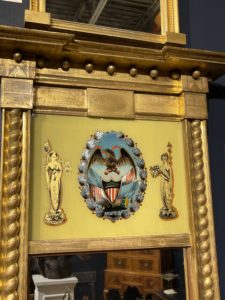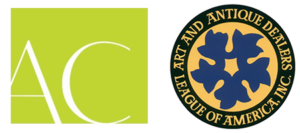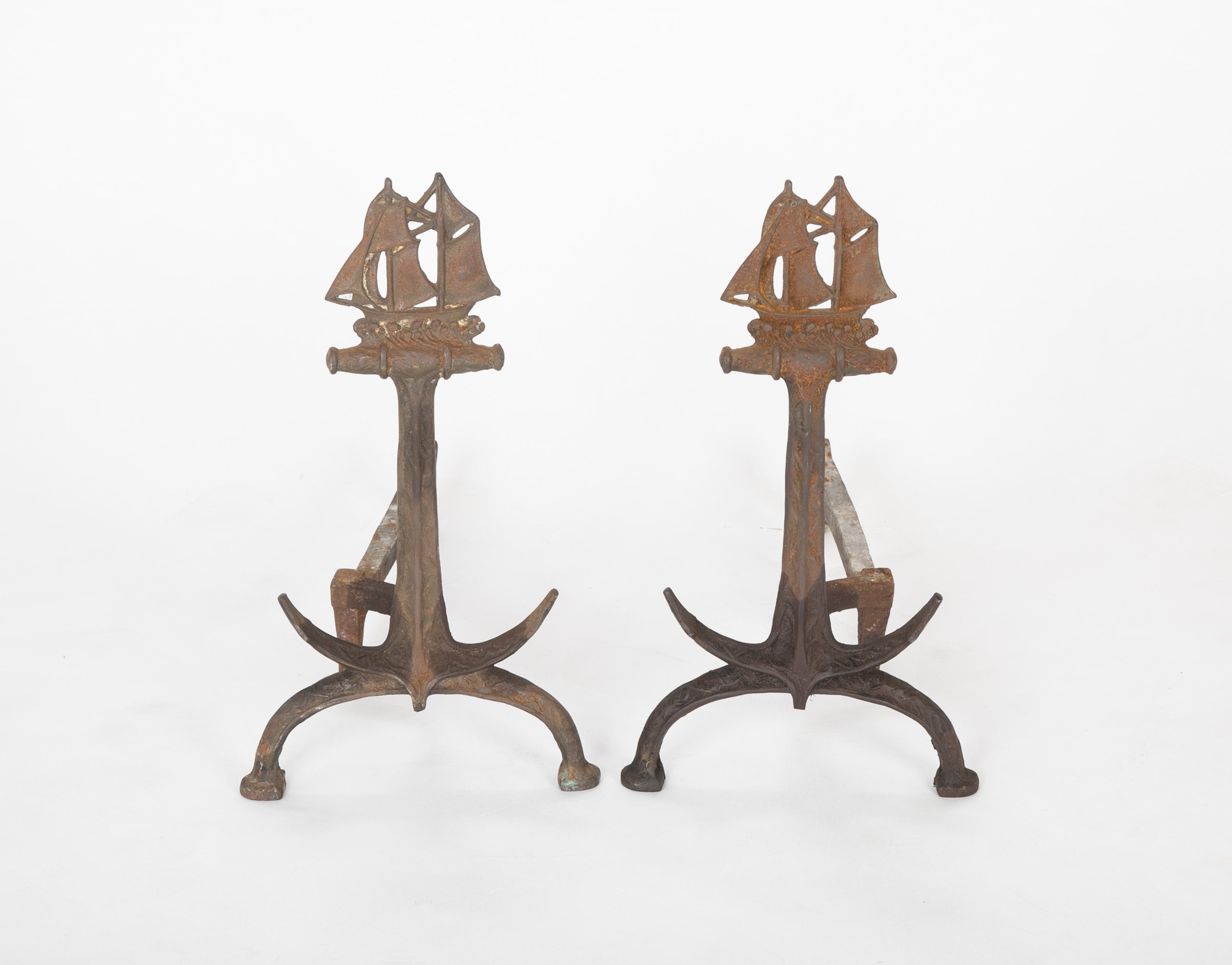Eglomise, or reverse painting on glass, panels were popularly used in American gilded mirrors and clocks. The peak period for creation of these eglomise panels was between 1810-1825. This exacting, delicate technique dates back to pre-Roman times. Eglomise panels frequently use silver and gold leaf in their designs. It is an incredibly difficult and tedious process, with little room for error. Because the image will be viewed through the glass panel in reverse of the way it is painted, the artist must first paint the surface details and then add background on top of the details.
Many of these mirror panels contain decorative bucolic scenes of houses, streams and trees as can be seen in the fine Albany, NY mirror c. 1820. It also contains a second smaller eglomise panel, a common attribute of Albany mirrors. It was also common to paint eglomise panels honoring George Washington, either with portraits of the revered Revolutionary War general and first President or with scenes of his home in Mt. Vernon.
A common theme for many of these panels was famous War of 1812 frigate battles between the young US Navy and the Royal Navy. We have handled several eglomise panels showing the victories of USS Constitution over HMS Guerriere and HMS Java, as well as ones portraying USS Macedonian and USS Chesapeake. Many of these panels were made to celebrate the young American republic’s victory in 1815 or to commemorate the 5th and 10th anniversaries of the successful end of the war.
One of the main triggers for the war was Royal Navy impressment of American sailors off American vessels, challenging freedom of the seas and the continued independence of the young country. As a result, following the American victory, it was common to use symbols of strength and victory in these eglomise panels. For example, the oak leaves surrounding the battle scene on this Constitution/Guerriere panel reflected commonly understood Christian references of oak leaves representing strength, freedom and independence. Laurel leaves representing victory were also common decorative elements.









